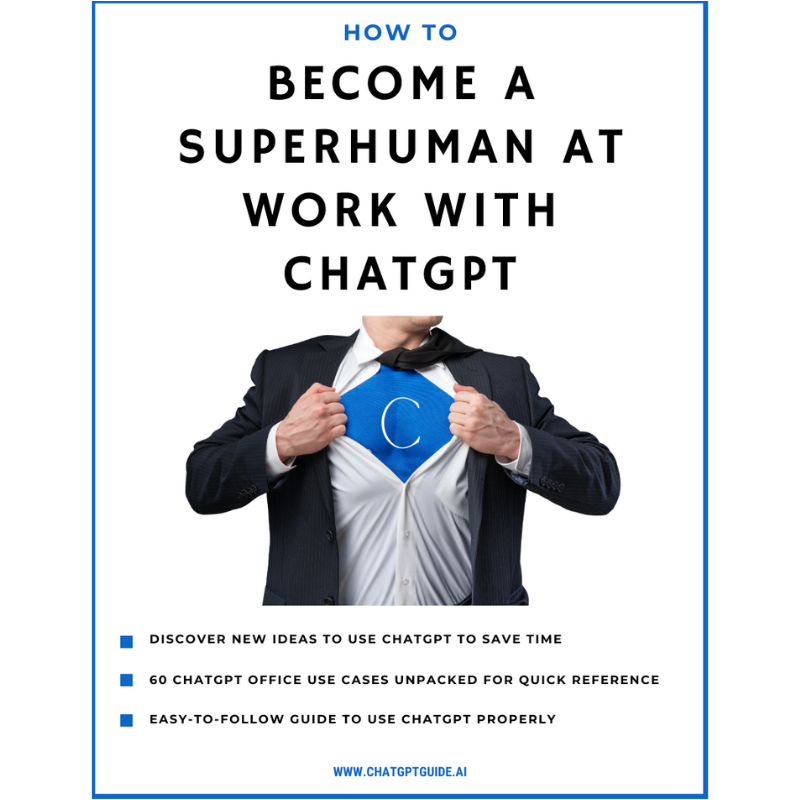In the era of artificial intelligence, mastering the art of interaction with models like ChatGPT can give you a significant edge, whether you’re in tech, marketing, or just a curious conversationalist.
But how do you go from being a regular user to an expert ChatGPT prompt engineer? This article outlines seven key ideas that will level up your ChatGPT game.
1. Deeply Understand the Technology: Know the AI’s Limits and Potential
It’s critical to familiarize yourself with the architecture and limitations of ChatGPT. Understand token limits, the effect of temperature on randomness, and other advanced settings. The more you know about what’s “under the hood,” the better you can calibrate your prompts for optimal responses.
Tip:
Read up on GPT-4’s architecture and regularly check updates to stay on top of the latest capabilities and limitations.
Guidance:
- Educate Yourself: Study the foundational papers and documentation on GPT-4 to understand its architecture.
- Explore Advanced Settings: Familiarize yourself with settings like ‘temperature’ and ‘max tokens’ by experimenting with them.
- Stay Updated: Follow OpenAI’s blog, newsletters, and announcements for any updates or changes to the model.
Example:
Understanding that a lower ‘temperature’ (e.g., 0.2) yields more deterministic output can help when you want specific, focused answers from ChatGPT.
You may also like 📖
- Ultimate Guide: using ChatGPT to Plan your next Trip
- Unleashing the power of ChatGPT to master Chess
- How to use ChatGPT to reply to emails in your 9-5 job like a pro
- Writing the Perfect Cold Email with ChatGPT: A Modern Spin on the AIDA Model
- How to use ChatGPT to get unique Gift Ideas for friends
- How to use ChatGPT to Plan the Perfect Kids Birthday Party
- How to use ChatGPT to create custom Meal Plans that work
- How ChatGPT can help you Memorize Anything quickly
- How ChatGPT can help you Write your Fiction novel 10x faster
- How to use ChatGPT to Summarize Books
2. Define Objectives Clearly: Know What You Want Before You Ask
Expert ChatGPT prompt engineers always have a well-defined objective. Knowing what you seek to achieve—whether it’s extracting specific information, brainstorming creative ideas, or conducting complex calculations—helps you structure your prompt effectively.
Tip:
Outline your objective in a single sentence before even approaching the model. This exercise brings clarity to your querying process.
Guidance
- Define Your Goal: Before querying, write down the precise objective of your interaction in one sentence.
- Draft a Prompt: Based on your objective, draft a tentative prompt.
- Refine: Review and refine your prompt to ensure it aligns with your objective.
Example:
If your objective is “To understand the geopolitical implications of water scarcity,” your refined prompt could be, “Explain the geopolitical ramifications of global water scarcity in the 21st century.”
You may also like 📖
3. Advanced Prompt Structuring: Beyond the Basics
Keywords are essential, but so are the surrounding words. Prompt Engineers often utilize a combination of leading questions, specificity, and context to extract nuanced information.
Example:
Basic Prompt: “Tell me about climate change.”
Advanced Prompt: “Provide a detailed overview of the long-term consequences of climate change on oceanic ecosystems.”
You may also like 📖
Guidance:
- Start with Keywords: Identify the essential keywords relevant to your query.
- Add Specificity: Make your prompt more focused by adding qualifiers or specific scenarios.
- Provide Context: If necessary, give background information to set the scene.
Example:
- Basic Prompt: “Tell me a joke.”
- Advanced Prompt: “Tell me a clean, one-liner joke suitable for a corporate audience.”
4. Experiment and Iterate: The Power of A/B Testing

No expert ever got there without experimentation. Apply A/B testing to different prompt styles and study the changes in the model’s output. Keep an iteration log to understand which prompt variations yield the most desirable outcomes.
Tip:
Use a spreadsheet to track your prompts and the model’s responses over time. Note any trends, anomalies, or improvements
Guidance:
- Draft Two Versions: Create two or more versions of your prompt that differ in structure, tone, or detail.
- Test: Query ChatGPT with each version and record the responses.
- Analyze and Refine: Study the responses to understand which version worked better and why.
Example:
A/B test between “Tell me about solar energy” and “Give me an in-depth analysis of the benefits and drawbacks of solar energy.”
Looking for more niche ideas to make money: We have the largest collection of how to make money with ChatGPT articles on the internet here
- 10 Ways Business Analysts Can Make Side Income Using ChatGPT
- 10 Ways Travel Enthusiasts can make side income Using ChatGPT
- 35 ways to use the Code Interpreter of ChatGPT to make money
- 10 Ways Moms Can Make Side Income Using ChatGPT
- 10 Ways Car Lovers Can Make Side Income Using ChatGPT
- 10 Ways Artists can make extra money Using ChatGPT
- 10 Ways Architects Can Make Side Income Using ChatGPT
- 10 Ways Americans can make money using ChatGPT
- 10 Ways Tech Geeks can make side money Using ChatGPT
5. Master the Art of Context Maintenance
ChatGPT can maintain context only up to a point (due to token limitations). Be proficient in directing conversations so that they remain within context, especially for complex, multi-step queries.
Example:
First Prompt: “Explain the causes of the French Revolution.”
Follow-up: “What were the economic implications in the decades following the Revolution?”
[convertkit form=5101225]
Guidance:
- Plan Multi-Step Queries: For complex questions, plan out a sequence of prompts in advance.
- Implement Step-by-Step: Execute the prompts in sequence, noting how each response feeds into the next.
- Adjust on the Fly: Be prepared to make real-time adjustments to your follow-up questions based on the AI’s previous answers.
6. Develop an Interaction Framework: Consistency is Key
While experimentation is crucial, having a standardized interaction framework can save time and bring consistency to your outcomes. Once you identify what works, create a template or set of guidelines for similar future queries.
Tip:
Share your framework with others in the ChatGPT community to get feedback and additional insights.
Guidance:
- Identify Best Practices: From your experiments, list the strategies that consistently yield the best results.
- Create a Template: Develop a prompt template or interaction guidelines based on these best practices.
- Continuously Refine: Update the framework as you gain more insights or as ChatGPT evolves.
Example:
Develop a template for information gathering:
- Start with a general context-setting prompt.
- Follow with specific sub-questions.
- Close with a prompt that asks for summary or additional resources.
You may also like 📖
7. Stay Curious: Follow Trends and Updates
ChatGPT and its architecture are not static. They are continuously updated and improved. Following trends, engaging with the community, and reading relevant research papers will keep you on the cutting edge of prompt engineering.
Tip:
Subscribe to AI journals, follow key personalities in the AI field on social media, and participate in webinars and conferences to keep your knowledge up-to-date.
Guidance:
- Engage with the Community: Join ChatGPT or AI-related forums and social media groups.
- Attend Events: Virtual webinars, conferences, and seminars are great places for up-to-date information.
- Read Widely: Subscribe to journals, newsletters, and blogs in the AI field.
Example:
Regularly check reputable AI journals like the “Journal of Artificial Intelligence Research” and websites like “ArXiv.org” for the latest papers related to language models and AI ethics.
Conclusion
The journey to becoming an expert ChatGPT prompt engineer is ongoing. It requires a blend of technological understanding, precise goal-setting, continuous experimentation, and an insatiable curiosity. By adopting these seven strategies, you’ll not only become more adept at interacting with ChatGPT but also pave the way for more meaningful and effective human-AI collaborations.




